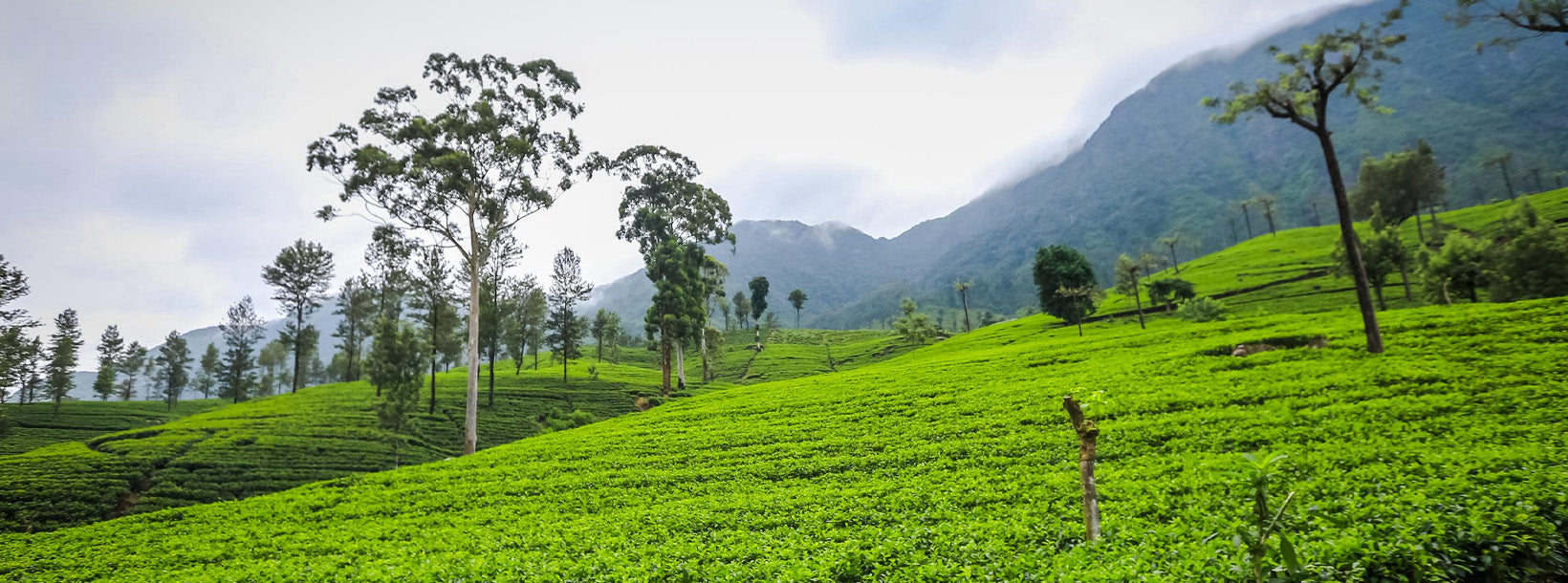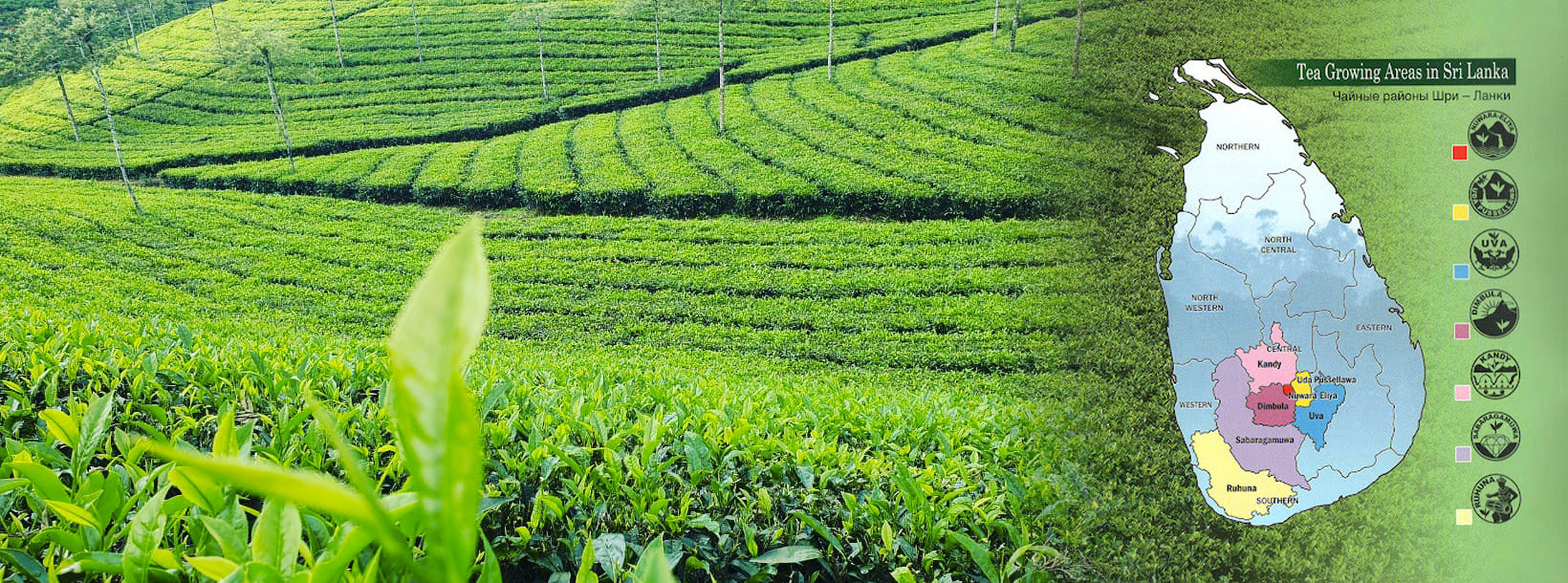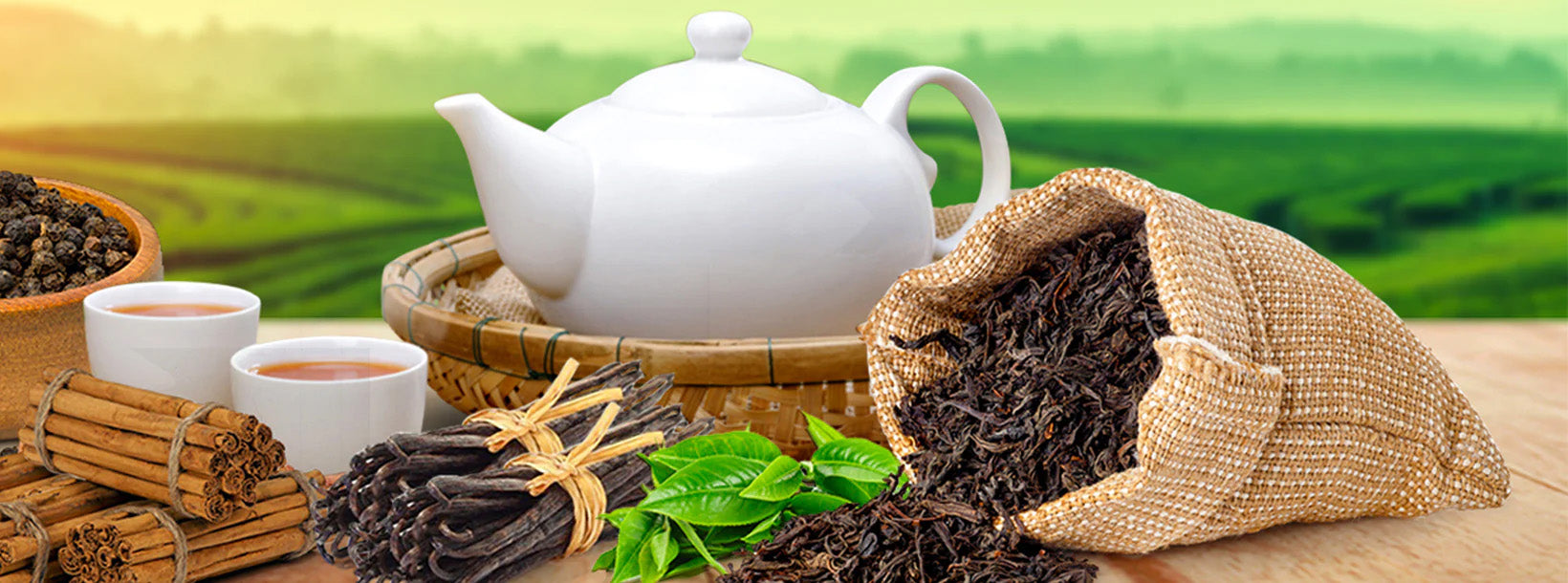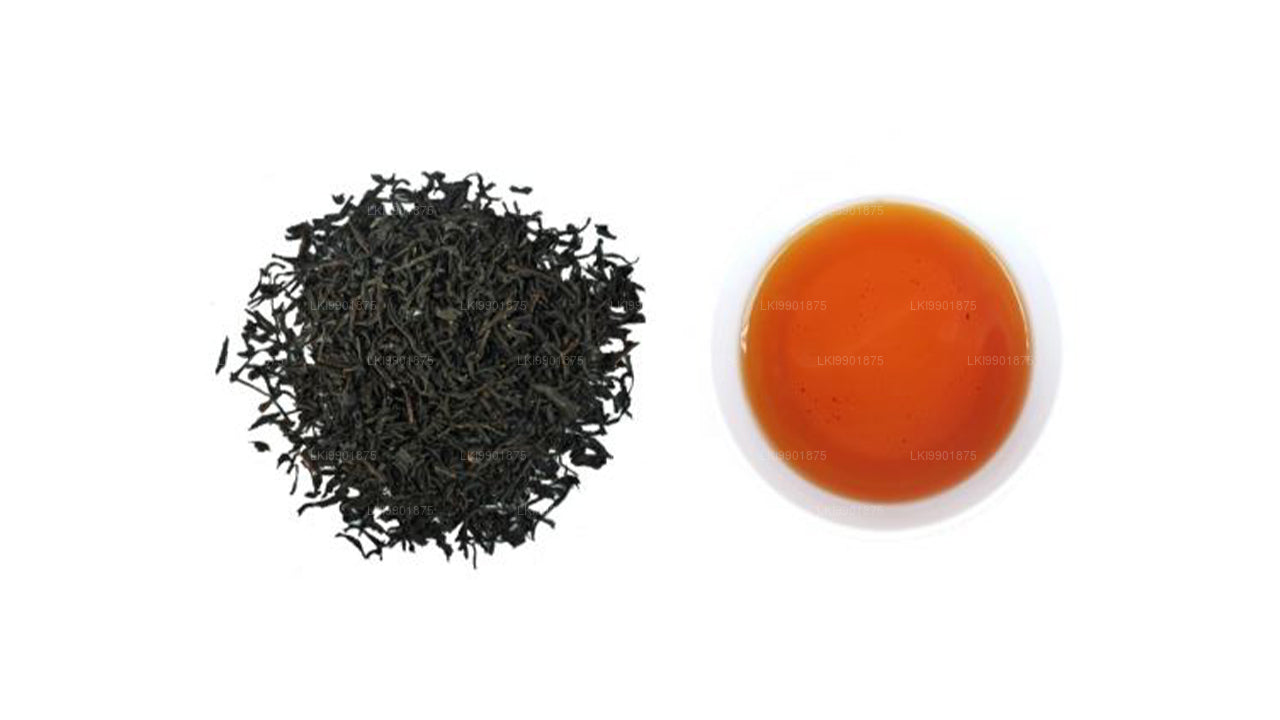
Piantagioni di tè
Le piantagioni di tè dello Sri Lanka, situate principalmente sugli altopiani centrali, sono rinomate per la produzione di alcuni dei tè più pregiati al mondo. Queste lussureggianti piantagioni, come quelle di Kandy, Nuwara Eliya e Hatton, offrono paesaggi panoramici e una ricca storia. Le piantagioni contribuiscono in modo significativo all'economia del paese, esportando tè di Ceylon di alta qualità in tutto il mondo.

Regioni del tè di Ceylon
L'infuso nella tua tazza ha una storia da raccontare. Parla di dolci colline, sole splendente e province lussureggianti. In Sri Lanka, le province centrali e meridionali producono la maggior parte del tè. Le diverse altitudini e i microclimi influenzano il sapore, il colore, l'aroma e la stagionalità caratteristici del tè di Ceylon.

Gradi del tè nero di Ceylon
Il tè di Ceylon, come lo conosciamo oggi, è disponibile in diverse varietà, ognuna con sapori e aromi unici. Oltre alla varietà di tè, il tè di Ceylon è suddiviso in diverse qualità.
Kandy Tea
In 1867, James Taylor marked the birth of the tea industry in Ceylon by starting a tea plantation in Loolecondera estate in Kandy in 1867.
He began the tea plantation on an estate of just 19 acres (76,890 m2) in Kandy. In 1872 he started a fully equipped tea factory in the same Loolecondera estate and that year the first sale of Loolecondra tea.
This area factories produce a broad mix of different ‘Tea grades’ and they have different leaf-particle sizes.
They produce from whole-leaf tea grades to semi-broken grades. For example OP Black Tea, OPA, BOP, BOPF tea, and Green Tea. In addition, CTC-style teas are also producing in the Kandy area.
The leaf particle size affects the strength of the brew.
Kandy teas tend to produce a relatively bright infusion with a coppery tone. Therefore, they give lighter in the cup and good strength. But the strength is not as much as the lower-grown teas Sabaragamuwa and Ruhuna area.
In general, in the first quarter of the year, you will get the best quality of tea.
Further, The first quarter receives cool, dry weather across the district to produce the best tea.
Kandy region is described as ‘mid-grown’, tea area. The altitude of cultivation ranging between 2000 and 4000 feet sea level.
Kandy area located in the middle of the three districts in the Central Province (North of Nuwara Eliya, and south of Matale)






